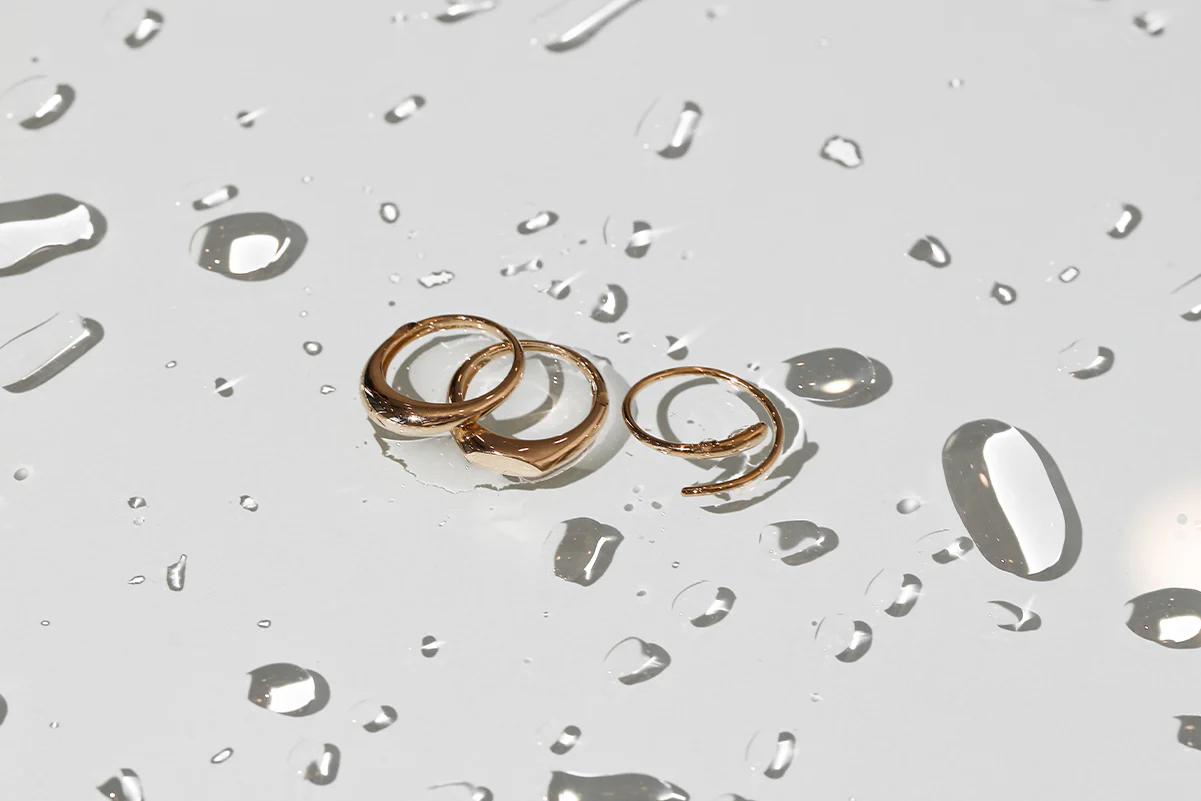The Ultimate Guide to Wearing Jewelry in Water: What You Need to Know
Jewelry is more than just an accessory; it holds sentimental, monetary, and aesthetic value. However, exposure to water can impact the longevity and beauty of your favorite pieces. From everyday wear to occasional dips in the pool, it’s essential to understand how water affects jewelry materials like gold, silver, gemstones, and more.
In this guide, we’ll uncover the dos and don’ts of wearing jewelry in water and provide practical tips to keep your pieces looking stunning for years. For a more detailed breakdown, you can also explore this article: The Dos and Don’ts of Wearing Jewelry in Water.
How Water Affects Different Jewelry Materials
Not all jewelry reacts to water the same way. Let’s explore how different materials behave when exposed to water:
-
Gold Jewelry
- Solid Gold: Pure gold (24K) is resistant to water, but it’s soft and prone to scratching. Lower karats (like 14K or 18K) contain other metals, which can tarnish when exposed to water or chemicals.
- Gold Plated: Gold plating can wear off quickly when exposed to water, especially chlorinated or salty water.
-
Silver Jewelry
- Sterling Silver: While silver can tolerate water briefly, it tarnishes over time, particularly in humid or salty environments.
-
Gemstones
- Porous gemstones, such as pearls, opals, turquoise, and amber, absorb water, which can dull their shine and even cause damage.
- Harder stones like diamonds, sapphires, and rubies are more resilient but can still be damaged by chemicals in chlorinated pools or saltwater.
-
Costume and Fashion Jewelry
- Fashion jewelry made from inexpensive metals or plastic often deteriorates rapidly when exposed to water, as the finish or glue holding the stones can weaken.
-
Stainless Steel and Titanium
- These metals are water-resistant and popular for their durability, making them a great option for water exposure.
The Dos of Wearing Jewelry in Water
Here are the essential tips for minimizing water damage while wearing jewelry:
-
Opt for Water-Resistant Materials
When heading to the beach or pool, wear pieces made from stainless steel, titanium, or silicone. These materials are resistant to rust and tarnish. -
Dry Jewelry Immediately
If your jewelry comes into contact with water, gently pat it dry with a soft, lint-free cloth to avoid water spots and tarnishing. -
Remove Jewelry Before Swimming
Chlorine in pools and saltwater can damage metals and gemstones. Always remove jewelry before swimming to prevent corrosion and dullness. -
Use Protective Storage
If you’re traveling to humid locations or beaches, store your jewelry in airtight pouches or anti-tarnish boxes to reduce moisture exposure. -
Clean Regularly
After accidental water exposure, clean your jewelry with a soft cloth and warm soapy water (only for non-porous stones and metals like gold).
The Don’ts of Wearing Jewelry in Water
-
Avoid Wearing Gold Plated Jewelry in Water
Gold plating wears off quickly when exposed to moisture, leaving the base metal vulnerable to tarnish. -
Don’t Wear Porous Gemstones
Stones like pearls, opals, and amber should never be submerged in water as they absorb moisture and lose their luster. -
Avoid Chlorinated and Saltwater
Chlorine can discolor gold and weaken metals, while saltwater accelerates tarnishing and corrosion. -
Never Shower or Bathe with Jewelry
While tap water may seem harmless, soaps, shampoos, and body oils can build up on your jewelry, causing dullness and grime. -
Don’t Store Wet Jewelry
Storing damp jewelry can lead to mold, tarnish, and metal deterioration over time. Always ensure pieces are fully dry before putting them away.
Best Practices for Jewelry Care
- Regular Maintenance: Inspect your jewelry for signs of tarnish, loose settings, or wear and tear.
- Polishing: Use a polishing cloth to restore shine to metals like gold and silver. Avoid harsh cleaners, as they can strip finishes.
- Professional Cleaning: For valuable pieces, schedule professional cleanings once or twice a year.
Jewelry That Can Withstand Water: Top Recommendations
If you can’t resist accessorizing during beach days or pool visits, opt for water-friendly options like:
- Stainless Steel Rings and Bracelets
- Silicone or Rubber Accessories
- Titanium Necklaces
- Non-porous Gemstone Pieces (e.g., Diamonds, Sapphires)
These materials are durable and resistant to water, ensuring they remain in pristine condition.
Wearing jewelry in water can be risky if you don’t follow proper care practices. Whether it’s gold, silver, or gemstone pieces, understanding how water affects jewelry is key to preserving its beauty and value. By following the dos and don’ts outlined in this guide, you can enjoy your favorite accessories for years to come.